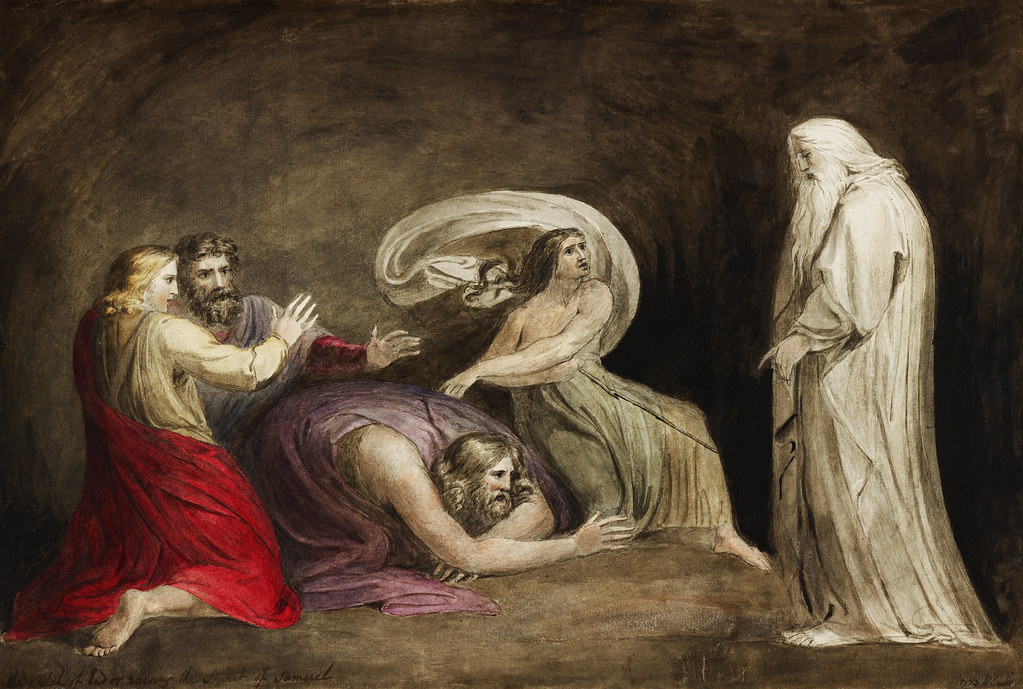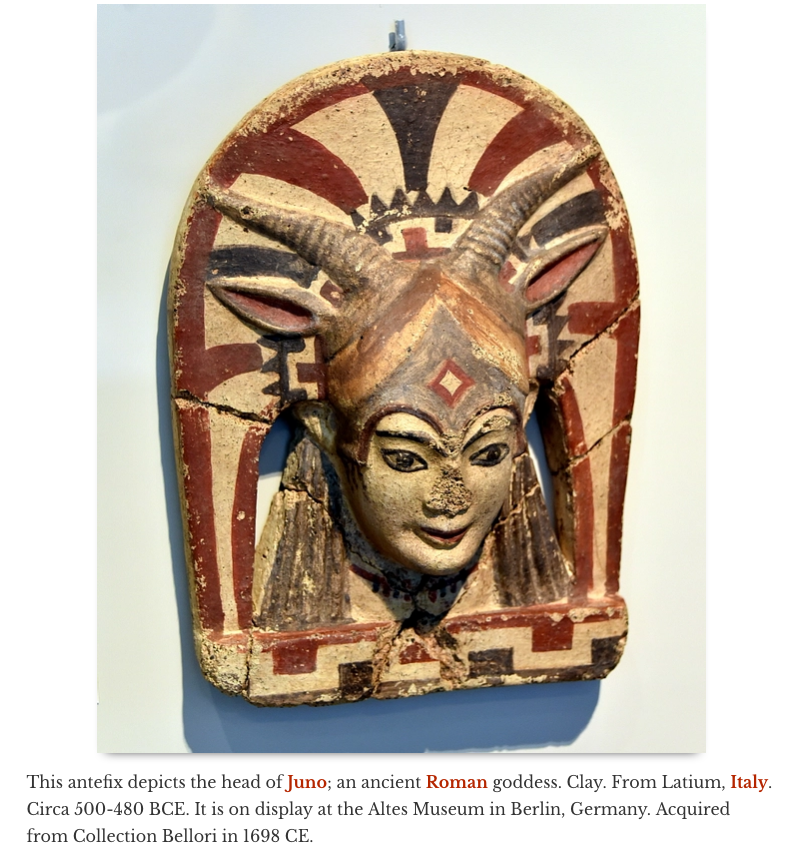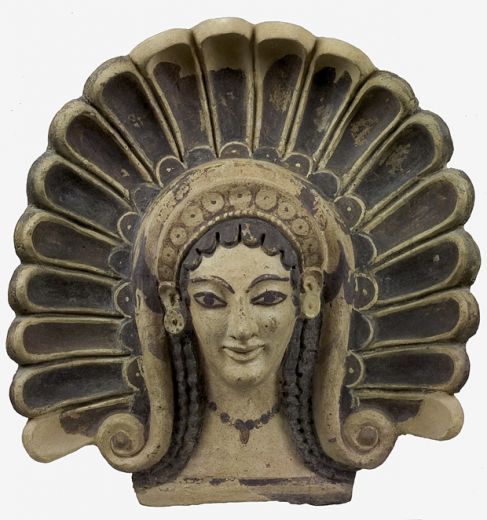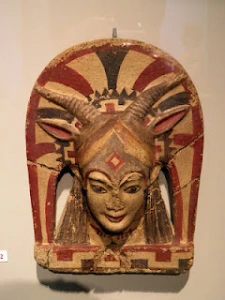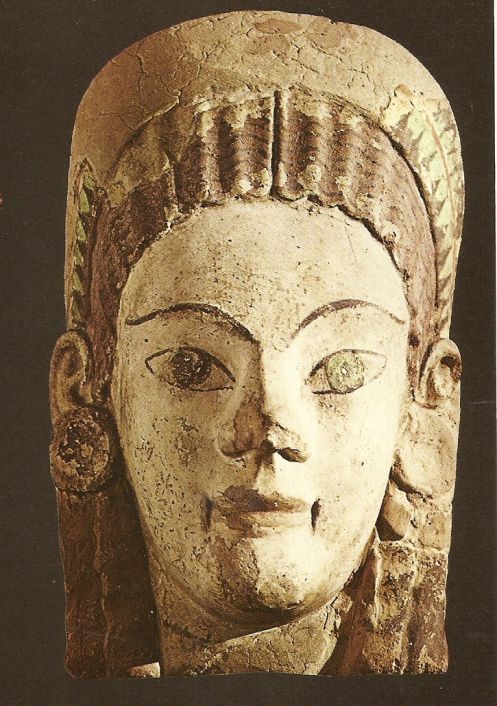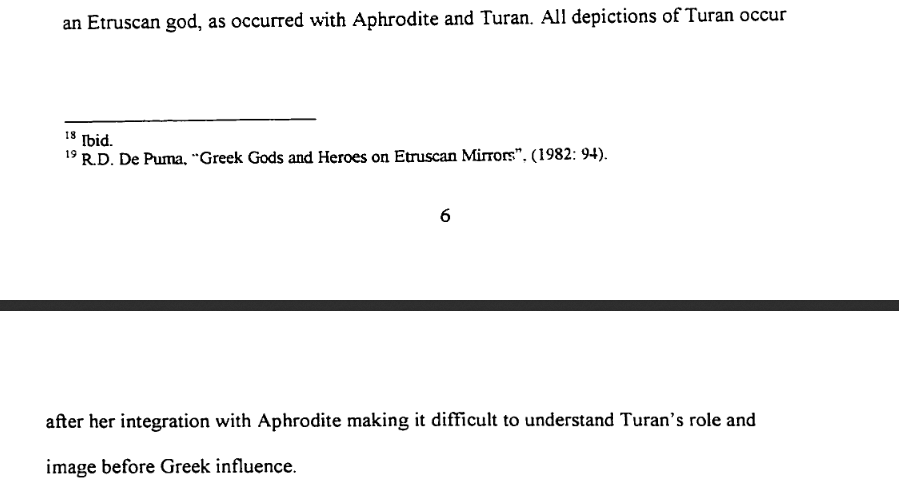Uni
Uni is an Etruscan primary goddess. My theory is that her name was actually Juni and the humans created Juno for Eve. Or Eve did not want to be named as Uno as that would be seen as the male counterpart to Uni and so they created Juno. While some will contend that the primary Etruscan goddesses were or were the equivalent to Hera, Athena, Artemis, Minerva, Juno, etc., I disagree. The primary goddess is Aphrodite and all of her various names and incarnations.
While historians see the Etruscans are rivals/contemporaries of the ancient Greeks, I see them as being even more important in certain ways because there is information within their culture that has been lost to the evolution of the Greek and Roman mythos.
There are sculptures that are similar to those found in Greek and Roman culture. One is like the art of Aries touching the breast of Aphrodite, and another is similar to that of Persephone holding her plate. But in the Etruscan Uni (Aphrodite), the “plate” is a divination tray. This is also underscored by a statue version of Kore where her eyes are slanted in an attempt to imitate Uni. Interestingly, there is also a cut on the lip of the “Hera” that resembles the cut that was done to my lip in 1991 and the difference in eye size is also unusual. I would contend that this statue is not “Hera,” but is a representation of the goddess that becomes Aphrodite. The middle figure below is believed to be representative of Kore/Persephone or Hera. One can see some resemblance between her and statues of Hera, as well as art of the Witch of Endor.
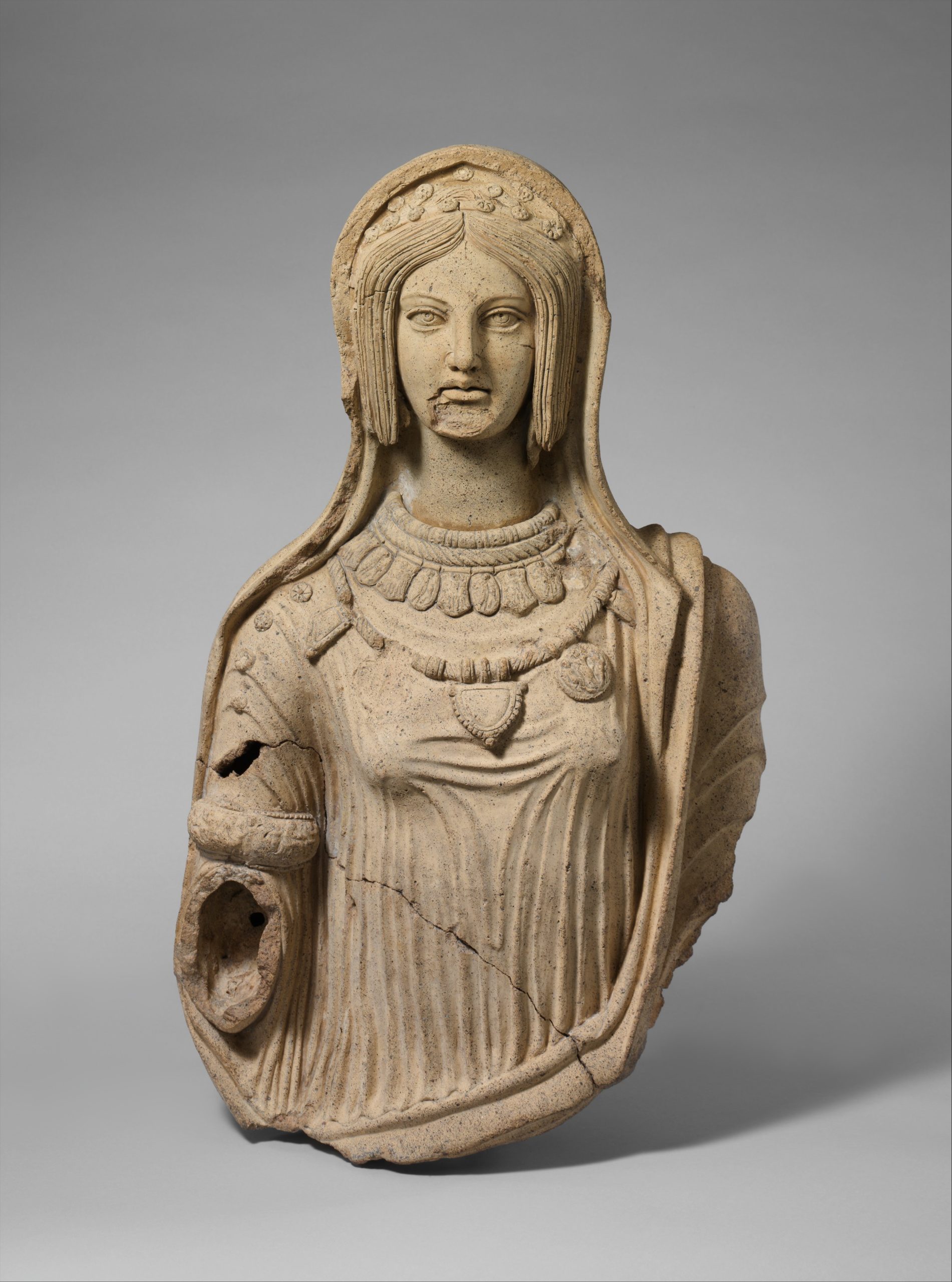
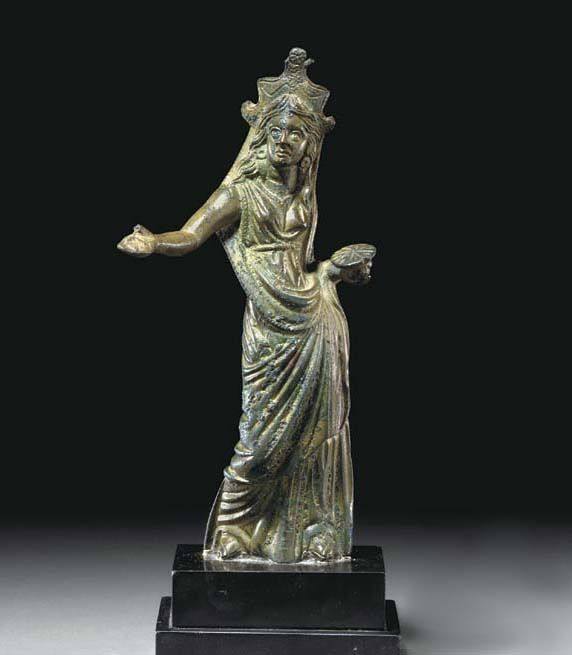
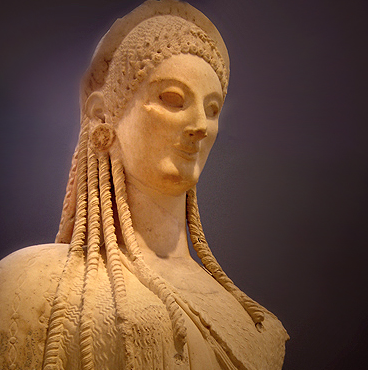
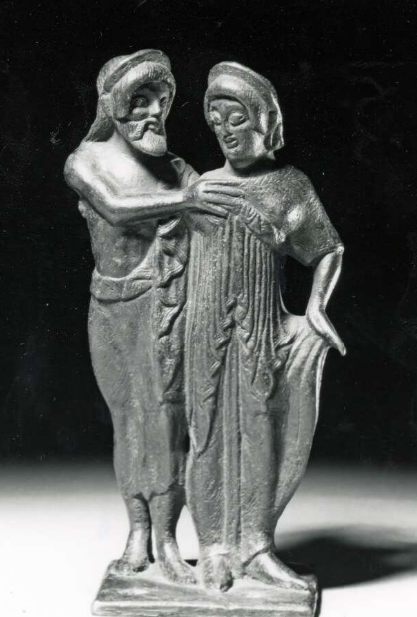
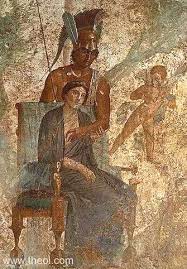

The authors of articles depicting this art will vastly disagree with me but these photos show the romantic love between a couple. It is not sex or call for chastity or even the stark scientific biology of child-rearing but rather a true romantic union where a male is loving and appreciating the female’s breasts as beautiful, sensual, and nourishing. In my story The Goddess Aped, this is what the wood wose/humans did not like. Their sex was originally simply for biology and when it was for pleasure, the couples were kept in separate lives. The male and female only came together to copulate or reproduce. In the supernatural communities, this was not the case. As you can see in the Veii Portonaccio figure, one could say the male is holding a bowl or vessel but I assert that it is a divining tray while the female holds their young. He and the female are in genuine partnership as equals-not carbon copies and not in competition. They are two individuals working as a complementary unit.
Why is he holding her right breast? Because she suckles from her left-the breast directly beneath her heart, which has the most blood-flow and life-giving energy and nourishment. And with his hand, he is connecting to her and the child.
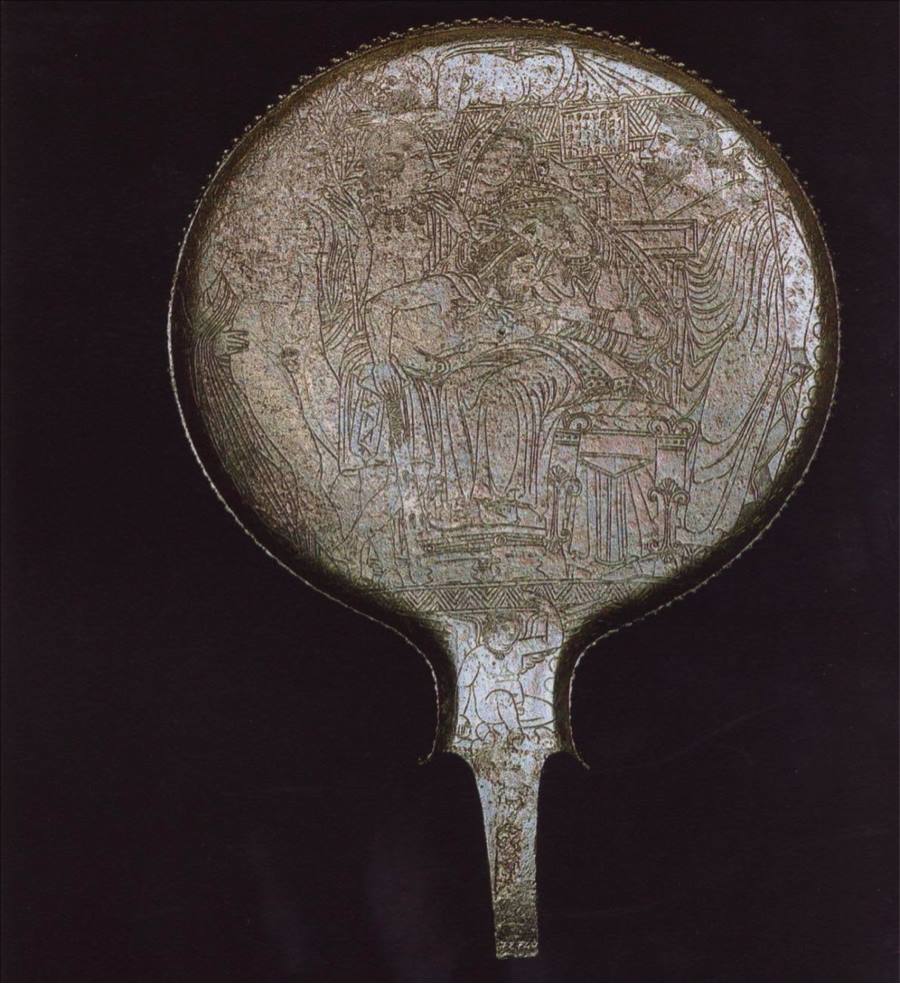
This piece is seen as possibly Etruscan and the scene is accepted as the adult Herakles suckling at the breast of Uni. My interpretation is that this is Uni’s husband, Tin, suckling at her breast while the celestial gods look in on the divine earth-bound couple. His casual act might be because she is still nursing and he is partaking of her breast milk, it could be a romantic or sexual gesture or it could be both.
In Etruscan society, women reached parity and equality.
So what of the controversy of Uni? Is she the equivalent to Hera or Aphrodite or another goddess? As I have mentioned, in my book, The Goddess Aped, and in my theories, there are not multitudes of goddesses. Most of the “goddesses” in various cultures would be called “divine queens.” That means those “goddesses” were of Eve and are mortal, human or hybrid-human females. And as these humans made their presence known by creating or dominating their created and accepted “divine mortal” pantheons, the true divine beings had to evolve and adapt. There is symbolism in the Etruscan art that makes me think the goddess Turan, which is accepted as the Etruscan form of Aphrodite, is actually an evolution of the original Uni.
Uni is such an important goddess to the Etruscans that her name appears on the tablets at Pyrgi. If the Etruscans were being forced to alter the characteristics or areas that Uni was seen to be goddess of in favor of foreign tribe or people’s interpretation, then it makes sense that they would hold on to certain elements as much as possible. It may also be that to soothe interpersonal relations among different groups, the attributes of a goddess were separated. We see this in the fact that Astarte is a goddess of sexuality, love, childbirth and war. These attributes are separated among different female goddesses by the Greeks. However, there is a tradition of worshiping an “armed” Astarte and an “armed” Aphrodite. In fact, there are tales of people worshiping an armed Aphrodite for protection of their city. Why I believe Uni/Turan/Astarte/Aphrodite are one goddess is what happens to Uni in relation to Juno.
Over time, Uni is transformed into Juno Sospitas (“savior”). As you recall, the Estruscans had control of Rome. It is only later that the people who were to become Romans took over. It was at this time that Juno Sospitas came into being. And Juno is one of the most controversial gods of the Roman pantheon. Why? Well, it does truly seem that she evolves over time with seemingly no outside cultural pressure or influence. This would seem more the workings of a human ordering off a menu. “And I want to be that, and that, oh and that.” She is a being that tries to be the goddess of all things. Also, there is the word, “regina.” This means “queen” and it will be a theme throughout the study of goddesses. Why would a goddess want to be queen? There is already the concept of “divine kings,” or mortal rulers with divine authority like that of demi-gods. The addition of queen to Juno and Hera, among others, does point to her actually being a human or mortal wanting divine status and worship. Also, with Juno being known as the “savior of Rome,” it would seem that whatever group she aligned herself with was at odds with the Etruscans. As this group proceeded through various territories, they changed the pantheons of gods to suit them.
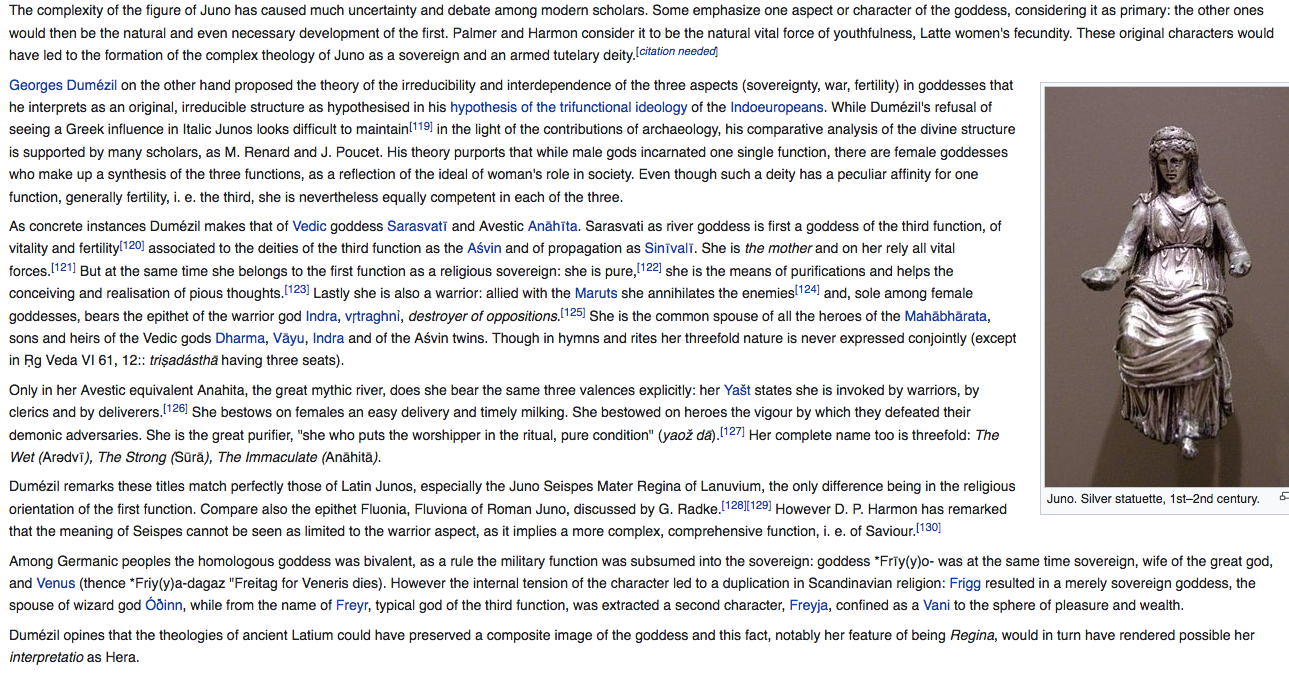
In the art we also see a transformation from the slant-eyed other worldly goddess to a rounder-eyed and more humanoid figure seen in statues of Hera and Juno. Here too we begin to see Kore and Persephone carrying the jars and bowls once placed in the hands of Uni or her husband.
So if this mortal or human woman is not a goddess, what is she? I think that answer can be found in a few places. First, she is usually associated with motherhood, rivers and purity. Second, she usually either marries the celestial top god or mortal/demi-god heroes and kings. She is also associated with being a hero or warrior herself. And, while Aphrodite can bestow immortality, this human/mortal divine queen gives rejuvenation. In looking at this, I believe her to be a witch. Going back to my story, The Goddess Aped, she is a woodwose that is anointed by Adam into witchcraft as a high priestess and made long-lived by him. To find out where her multiple lives come from, you will have to read the book.
In the painting below, the human/mortal queen is described as Venus. She is holding what looks to be the staff/stang of a witch, as well as the gold spear. This spear could be mythological (similar to spear of Lugh) or denoting royalty and armor or even be the gold rod of the magician alchemist. And she is being offered the baby Adonis. This could be symbolic of the woodwose cannibalism or her use of baby fat or blood after a sacrifice. One assumes that Countess Bathory was a vampyre, it is far more likely she was Eve or of Eve’s line and a witch. Mind you, she is not a blood-born witch of the powers given to Lilith by God. This is a mortal, human witch who received her anointing from Adam.

Further evidence of this is in Saul and the Witch of Endor.
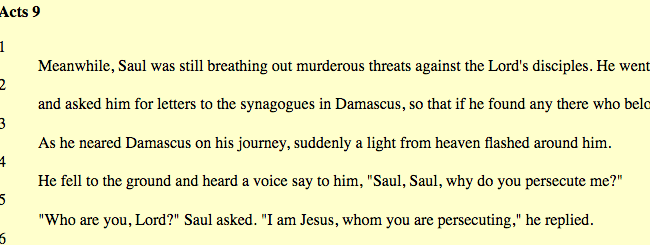
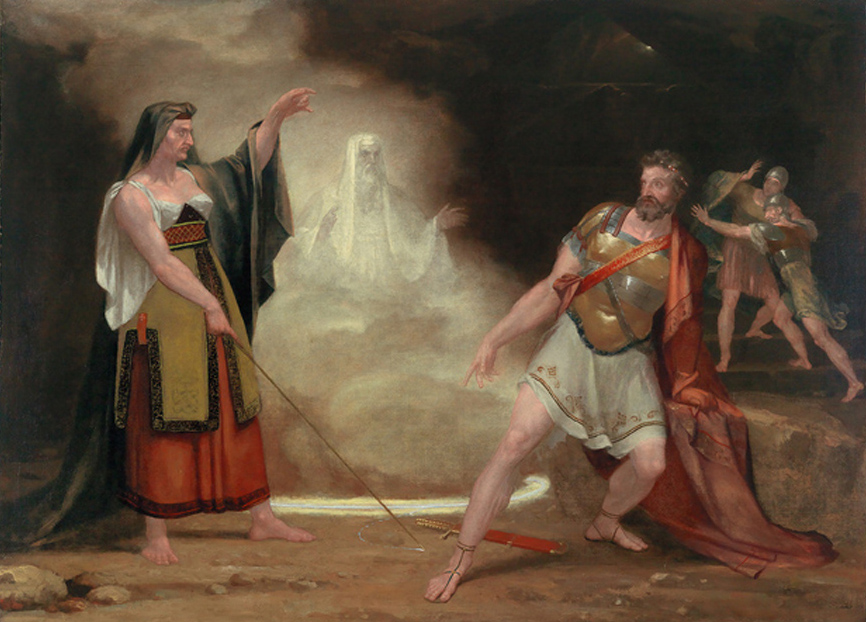
As you can see in her face, the Witch of Endor is depicted as an older female much like the statues of Hera and Juno. This is because Adam did not anoint her until she was older and they had decided to become not only priest and high priestess, but also king and queen of man. For God’s punishment of them, they would tell their children which gods to worship and how.
And in The Goddess Aped, you see that Eve’s pursuit of Lilith’s line continues through natural witches like Jesus and Mary Magdalene.
